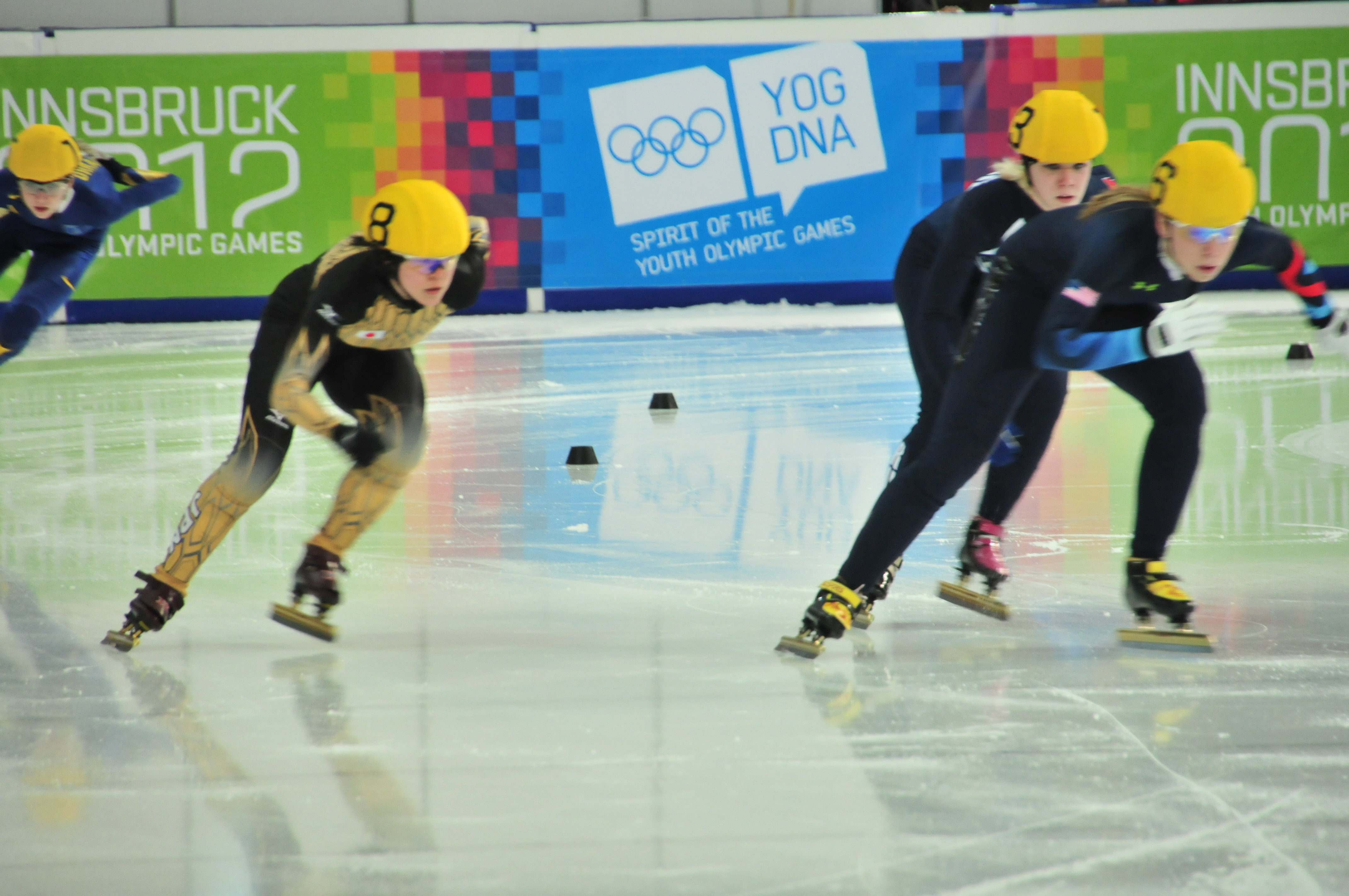|
Marie-Ève Drolet
Marie-Ève Drolet (born February 3, 1982) is a Canadian short track speed skater who competed in the 2002 Winter Olympics where she won a bronze in the relay event. She also has six ISU World Championship medals to her name and was a two time overall World Junior Champion in 2000 and again in 2001. Career In 2002, she was a member of the Canadian relay team which won the bronze medal in the 3000 metre relay competition. In the 1000 m event she finished fourth and in the 1500 m contest she finished sixth. Surprisingly to most of the public she announced her retirement after the 2002 Olympics. Though Drolet was seen as a successor to Nathalie Lambert, Isabelle Charest and Annie Perreault, she herself did not feel the same way. Instead she said that "I wanted to stop. I no longer wanted to be an athlete; I wanted to be a student. I was only 20, so I wanted to do other things. I wanted to travel, make new experiences." Drolet took a six-year hiatus that saw her complete a degree i ... [...More Info...] [...Related Items...] OR: [Wikipedia] [Google] [Baidu] |
Short Track Speed Skating
Short-track speed skating is a form of competitive ice skating, ice speed skating. In competitions, multiple skaters (typically between four and six) skate on an oval ice track with a length of . The rink itself is long by wide, which is the same size as an Olympic-sized figure skating rink and an international-sized ice hockey rink. Related sports include long track speed skating and inline speed skating. History Short-track skating developed from speed skating events that were held with mass starts. This form of speed skating was mainly practised in the United States and Canada, as opposed to the international form, where athletes skated in pairs. At the 1932 Winter Olympics, speed skating events were conducted in the mass start form. Competitions in North America tended to be held indoors, for example in Madison Square Garden, New York, and therefore on shorter tracks than was usual for outdoor skating. In 1967, the International Skating Union (ISU) adopted short-track spee ... [...More Info...] [...Related Items...] OR: [Wikipedia] [Google] [Baidu] |
International Skating Union
The International Skating Union (ISU) is the international governing body for competitive ice skating disciplines, including figure skating, synchronized skating, speed skating, and short track speed skating. It was founded in Scheveningen, Netherlands, in July 1892, making it one of the oldest international sport federations. The ISU was formed to establish standardized international rules and regulations for the skating disciplines it governs, and to organize international competitions in these disciplines. It is now based in Switzerland. History The International Skating Union (ISU) was founded in 1892 in the Dutch seaside town of Scheveningen. The meeting was attended by 15 men, as the national association representatives from the Netherlands, Great Britain, Germany/Austria, and two clubs from Stockholm (Sweden) and Budapest (Hungary). The ISU was the first international winter sports federation to govern speed skating and figure skating, as it laid down the rules for spe ... [...More Info...] [...Related Items...] OR: [Wikipedia] [Google] [Baidu] |
Women's 1500m, 2014 Winter Olympics, Semifinal 1 (3)
A woman is an adult female human. Prior to adulthood, a female human is referred to as a girl (a female child or adolescent). The plural ''women'' is sometimes used in certain phrases such as "women's rights" to denote female humans regardless of age. Typically, women inherit a pair of X chromosomes, one from each parent, and are capable of pregnancy and giving birth from puberty until menopause. More generally, sex differentiation of the female fetus is governed by the lack of a present, or functioning, SRY-gene on either one of the respective sex chromosomes. Female anatomy is distinguished from male anatomy by the female reproductive system, which includes the ovaries, fallopian tubes, uterus, vagina, and vulva. A fully developed woman generally has a wider pelvis, broader hips, and larger breasts than an adult man. Women have significantly less facial and other body hair, have a higher body fat composition, and are on average shorter and less muscular than men. Thro ... [...More Info...] [...Related Items...] OR: [Wikipedia] [Google] [Baidu] |

.jpg)